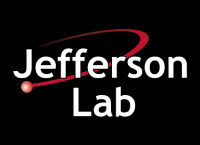Professional Contacts and Collaborations
Jefferson Lab’s SRF capabilities are strengthened by an extended network of professional contacts and collaborations with national, international, and industrial partners.
Academic:
Argonne National Laboratory ( Illinois, U.S.; operated by University of Chicago) — RF structures and microphonics control for the Rare-Isotope Accelerator.
Brookhaven National Laboratory ( Upton, New York, U.S.) — SRF photocathode electron gun and cryomodule for RHIC-II electron cooling; e-CX cavity: a high-current (~1 A) cavity/cryomodule being developed to deliver an electron beam for cooling of the RHIC ion beam; AGS upgrade with a superconducting linac to provide ‘super beams’ for neutrino physics
Cornell University ( Ithaca, New York, U.S.) — FEL and energy-recovering linear accelerators (energy-recovering linacs, or ERLs);SRF technology; RF controls; thin films – coating of 500 MHz copper
Daresbury Laboratory ( England) — DC gun and cryomodule for 4GLS (fourth-generation light source) ERL (energy-recovering linear accelerator) prototype
DESY (accelerator laboratory in Hamburg, Germany) — Testing of hydroformed cavities, properties of niobium, processing techniques
FZK (research center in Karlsruhe, Germany) — Ultrahigh vacuum
FZR (research center in Dresden, Germany) — SRF photocathode electron gun
INFN (Italian national nuclear physics institute) — A15 compound superconductors; Spun niobium cavity testing (production); development of new superconducting materials
KEK (Japanese high-energy accelerator research organization) — Power couplers and material processing for the Spallation Neutron Source
Los Alamos National Laboratory (Los Alamos, New Mexico, U.S.; operated by the University of California) — High residual resistivity ratio (RRR) niobium microstructure
Michigan State University (East Lansing, Michigan, U.S.; site of National Superconducting Cyclotron Laboratory) — RF structures design and testing for the Rare-Isotope Accelerator; development and testing of prototype β=0.47 cavities, assembly of 2-cavity string
NASA (Hampton, Virginia, U.S.) — Nb cavity surface treatment using electron beam welder
National Institute of Standards and Technology (U.S. government agency) — Properties of niobium; measurement of interstitial hydrogen
Old Dominion University (Norfolk, Virginia, U.S.) — Hydrogen in metals and niobium plasma deposition
Oak Ridge National Laboratory (Oak Ridge, Tennessee, U.S.) — Cavity and cryomodule design, prototyping, and fabrication for the Spallation Neutron Source
Sandia National Laboratory (Albuquerque, New Mexico, U.S.) — Thin film measurements; equipment cleaning (high-pressure rinsing) for direct energy recovery experiment
SUNY Albany (State University of New York, U.S.) — Hydrogen in niobium at the Ion Beam Laboratory; nuclear measurement of interstitial hydrogen
TESLA (international collaboration centered at DESY in Hamburg, Germany) — Broad collaboration of SRF R&D for linear colliders and x-ray free-electron lasers
TRIUMF (Canada's National Laboratory for Particle and Nuclear Physics) — Chemistry of quarter-wave resonator cavities for ISAC
University of Virginia (Charlottesville, Virginia, U.S.) — Hydrogen in grain boundaries, SQUID microscope
Industrial:
Reference Metals Company (niobium supplier headquartered in Bridgeville, Pennsylvania, U.S.) — Microstructure control of high-purity niobium (with the University of Virginia and Los Alamos National Laboratory)
AES Corporation (U.S.) — High-current (1 A, 750 MHz) electron injector for free-electron lasers
Energen Corporation (energy company headquartered in Birmingham, Alabama, U.S.) — Tuner designs
Utron Technologies Corporation (electronics manufacturer in Taiwan) — Component fabrication via explosive compression
Alameda Applied Sciences Corporation (research organization in San Leandro, California, U.S.) — Niobium thin films
Konstantin — (Austria) Development of advanced getter pump systems


